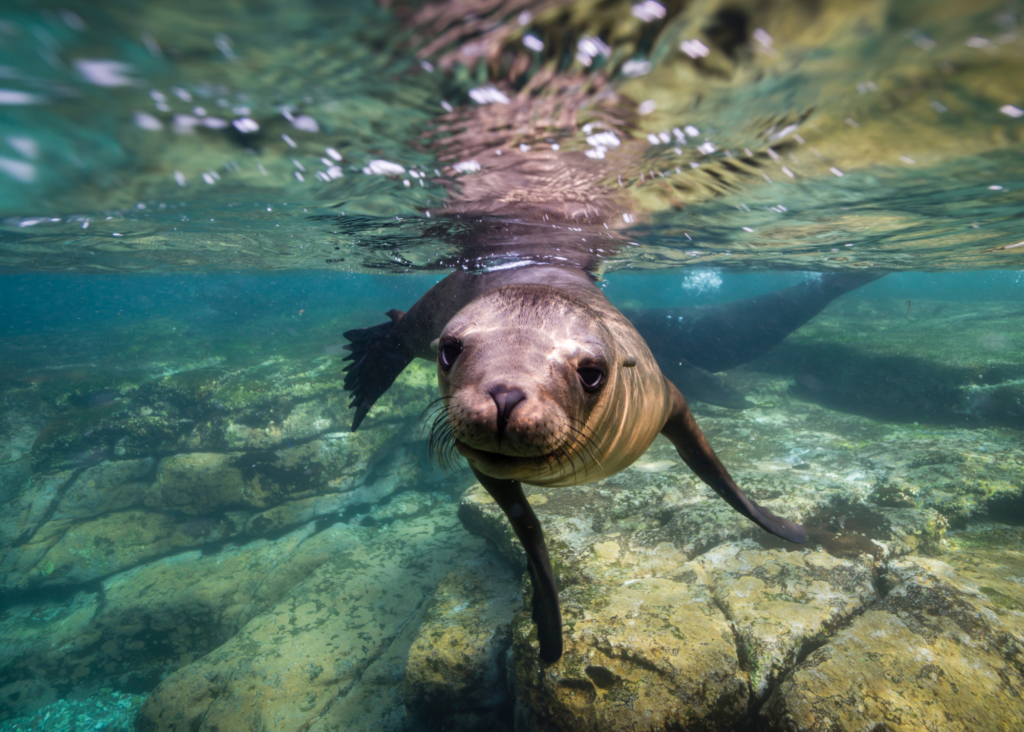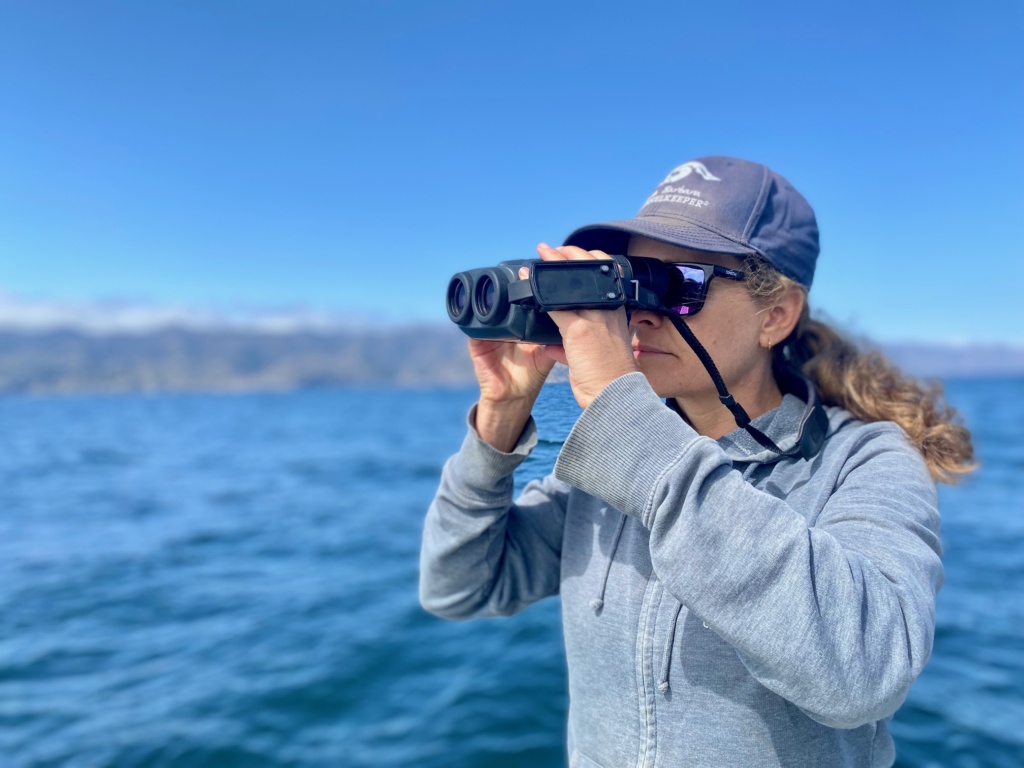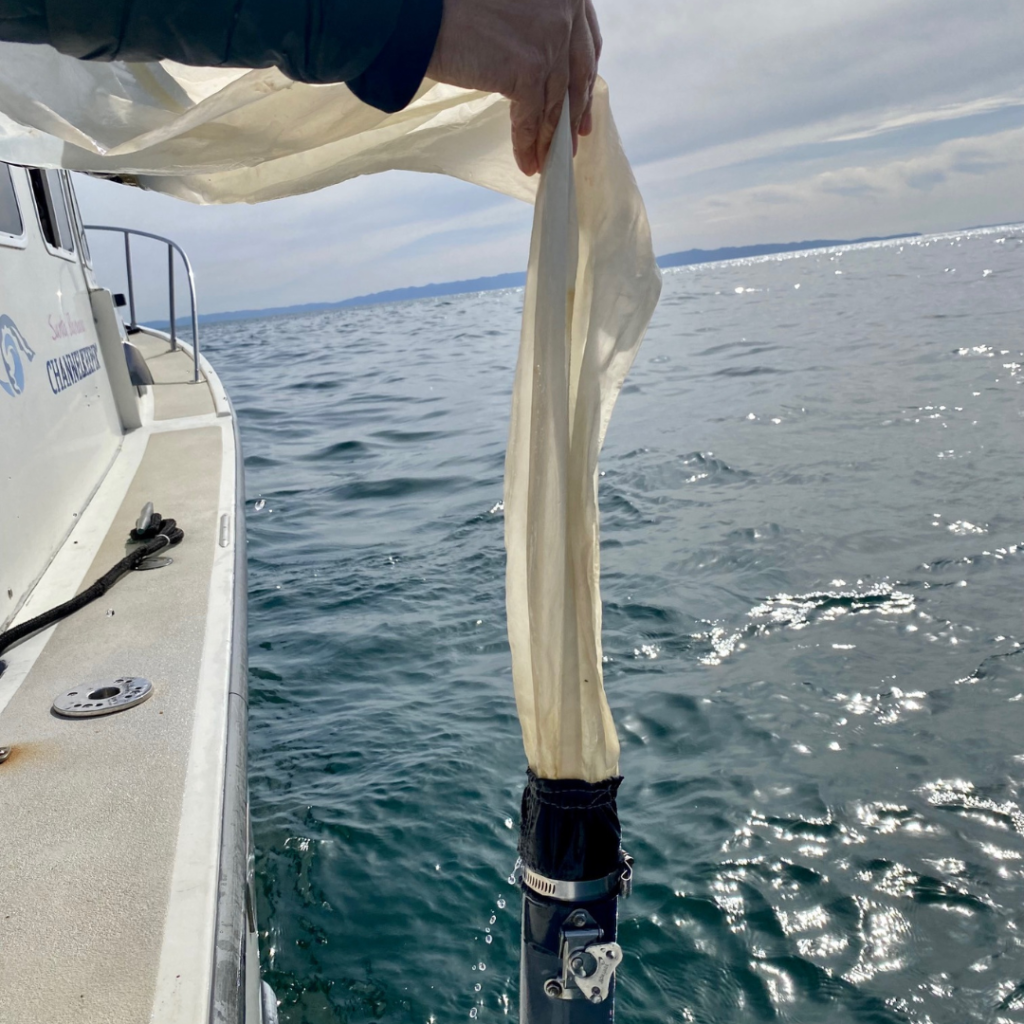Home to acres of giant kelp forests and a diverse array of marine species—from anemones and nudibranchs to sheephead and yellowtail, and sharks, sea lions, dolphins, and whales—the Santa Barbara Channel is considered an ecological treasure and one of the most biologically rich ecosystems on Earth.
Its unparalleled species density and diversity can be attributed to the Channel’s location in the transition zone between the cool northern California Current and warm Southern California Countercurrent, where two distinct ecological systems merge. In addition, wind-driven upwellings, which force deep, nutrient-laden ocean waters to the surface nourish a productive food web that includes plankton, squid, hundreds of fish species and invertebrates, dolphins, sharks, birds, and whales.

Why is biodiversity important?
Biodiversity is essential for healthy ecosystems. It is a primary indicator of our planet’s health. All of the organisms within an ecosystem are interconnected, so when biodiversity declines and organisms disappear, it affects the entire ecosystem’s ability to function and survive. Humans, as part of this network, are reliant on the ecosystem’s health and biodiversity. Every breath we take depends on another life, another species. Healthy ecosystems provide us with clean water, air, a secure food supply, essential medicines, and they also help moderate the climate.
Help us Protect Biodiversity
Humans have caused rapid ecosystem changes and loss of biodiversity across the planet in recent decades. In the Santa Barbara Channel scientists have documented changes to fish and bird populations, shifts in ocean pH levels, and an increase in the frequency and intensity of harmful algae blooms that have indicated imbalances.
Channelkeeper works to protect biodiversity in the Santa Barbara Channel by conducting important fieldwork, increasing public awareness, advocating for more protective policies, and enforcing environmental laws.

Marine Protected Areas
Out on the water, our team monitors human activity within nine of the nineteen marine protected areas in the Santa Barbara Channel and educates the public on their ecological, economic, and cultural value. These designated areas provide sanctuaries for species to grow and reproduce. We also mobilize a corps of volunteers to help track human activity in them through our MPA Watch program.
Plankton Monitoring
Channelkeeper staff collects plankton samples and sends them to the California State Health Department for analysis as part of our effort to monitor hazardous algal blooms in the Santa Barbara Channel.

In addition, our team periodically assists with domoic acid response efforts and important research in the Santa Barbara Channel by collecting water samples and sending them to experts with the Southern California Coastal Water Research Project. The data and observations that we collect during these sampling events will help provide a better understanding of the geographic extent of algae bloom events and how climate stressors may affect them.
Policy Development
Through ongoing advocacy efforts to address pollution, habitat destruction, and the impacts of climate change, and protect both water resources and public health, we work to improve environmental policies at the local, state, and national level. Some of the issues that we are working on are regulating pollution from irrigated agriculture, evaluating the impacts of aquaculture project development in the Santa Barbara Channel, addressing the environmental risks and limiting the number of cruise ships that anchor off Santa Barbara, and restoring flows to the Ventura River.
We hope you’ll join us in taking action locally to protect the biodiversity in our backyard from threats from habitat destruction, pollution, and the effects of climate change. Become an MPA Watch volunteer and help track activity in these aquatic sanctuaries, join our Watershed Brigade to help remove trash from local waterways and reduce pollution, or support our work to protect and restore ecosystems throughout the Santa Barbara Channel with a donation. Let’s work together to ensure that they are healthy and vibrant for future generations.